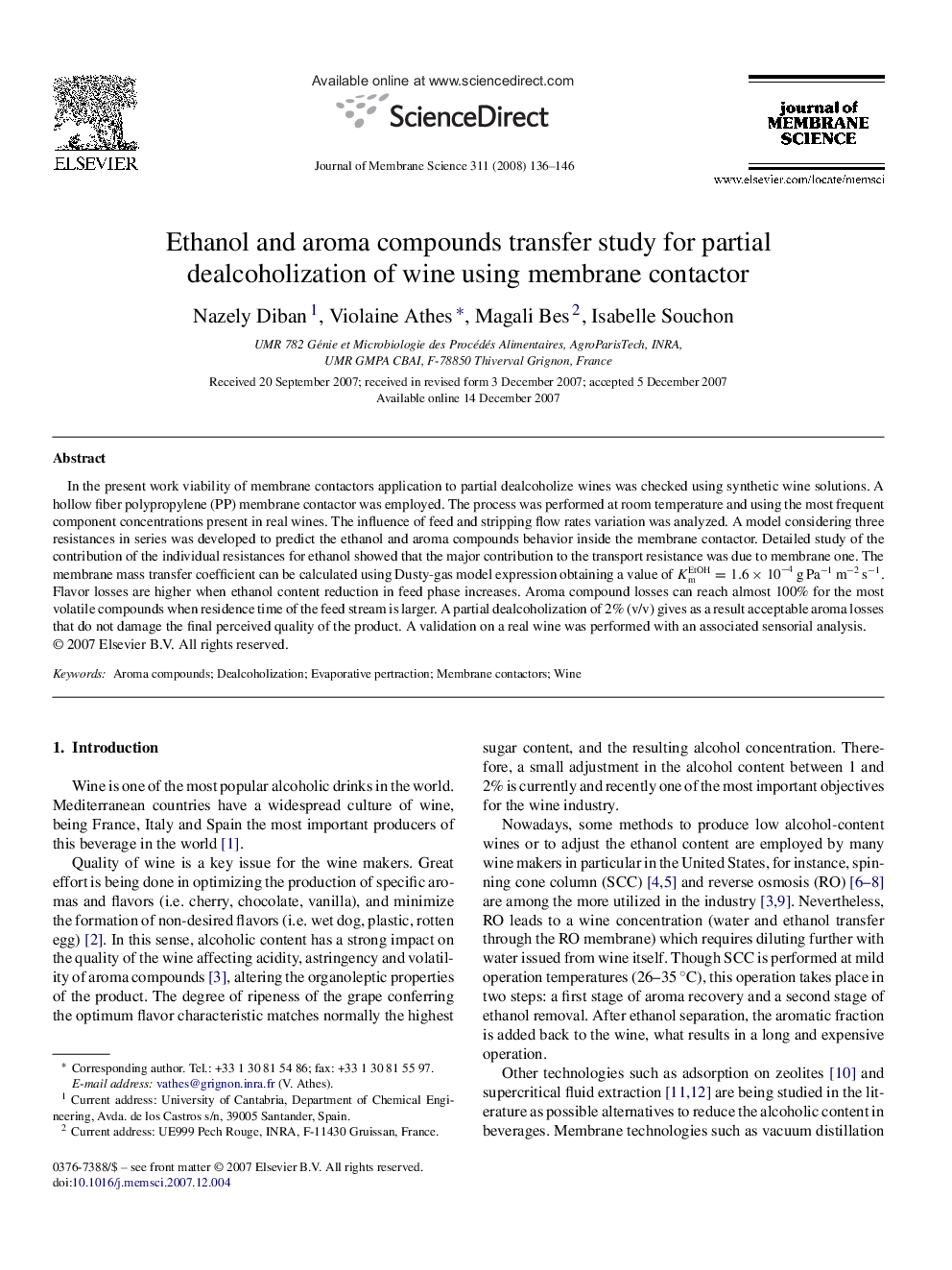| Article ID | Journal | Published Year | Pages | File Type |
|---|---|---|---|---|
| 638058 | Journal of Membrane Science | 2008 | 11 Pages |
In the present work viability of membrane contactors application to partial dealcoholize wines was checked using synthetic wine solutions. A hollow fiber polypropylene (PP) membrane contactor was employed. The process was performed at room temperature and using the most frequent component concentrations present in real wines. The influence of feed and stripping flow rates variation was analyzed. A model considering three resistances in series was developed to predict the ethanol and aroma compounds behavior inside the membrane contactor. Detailed study of the contribution of the individual resistances for ethanol showed that the major contribution to the transport resistance was due to membrane one. The membrane mass transfer coefficient can be calculated using Dusty-gas model expression obtaining a value of KmEtOH=1.6×10−4 g Pa−1 m−2 s−1. Flavor losses are higher when ethanol content reduction in feed phase increases. Aroma compound losses can reach almost 100% for the most volatile compounds when residence time of the feed stream is larger. A partial dealcoholization of 2% (v/v) gives as a result acceptable aroma losses that do not damage the final perceived quality of the product. A validation on a real wine was performed with an associated sensorial analysis.
